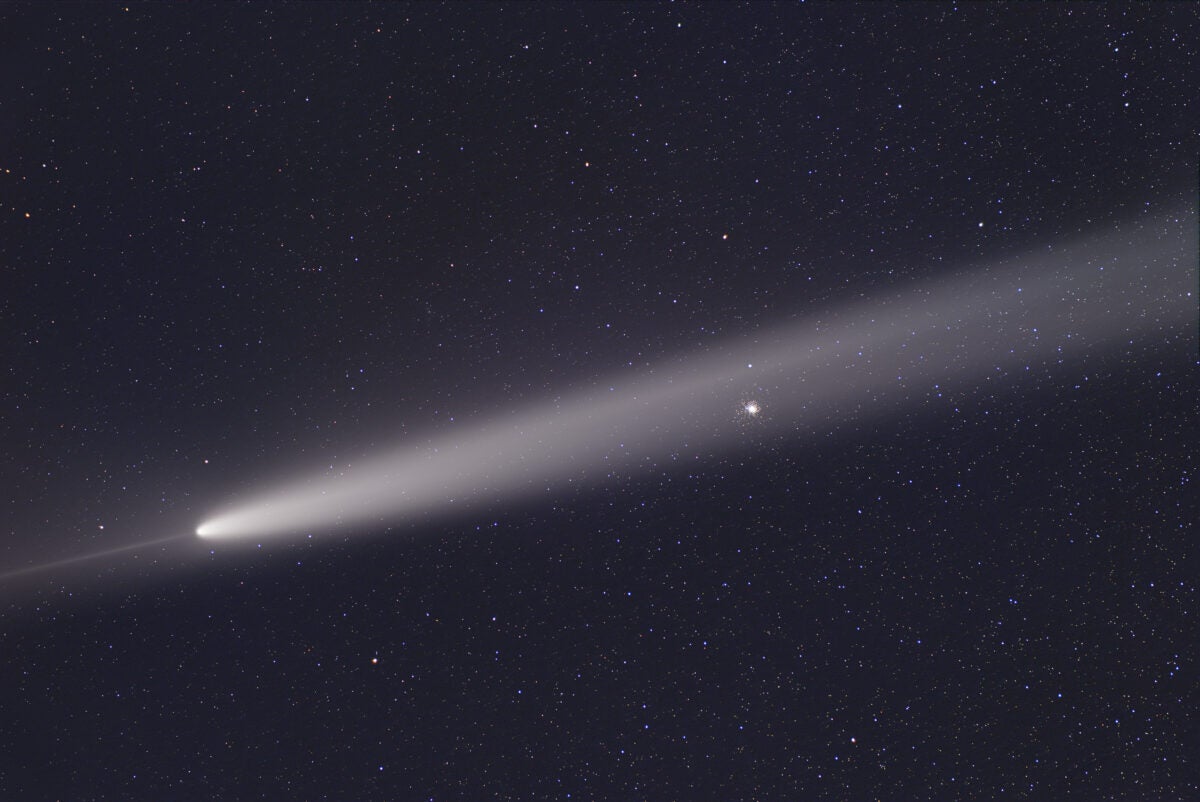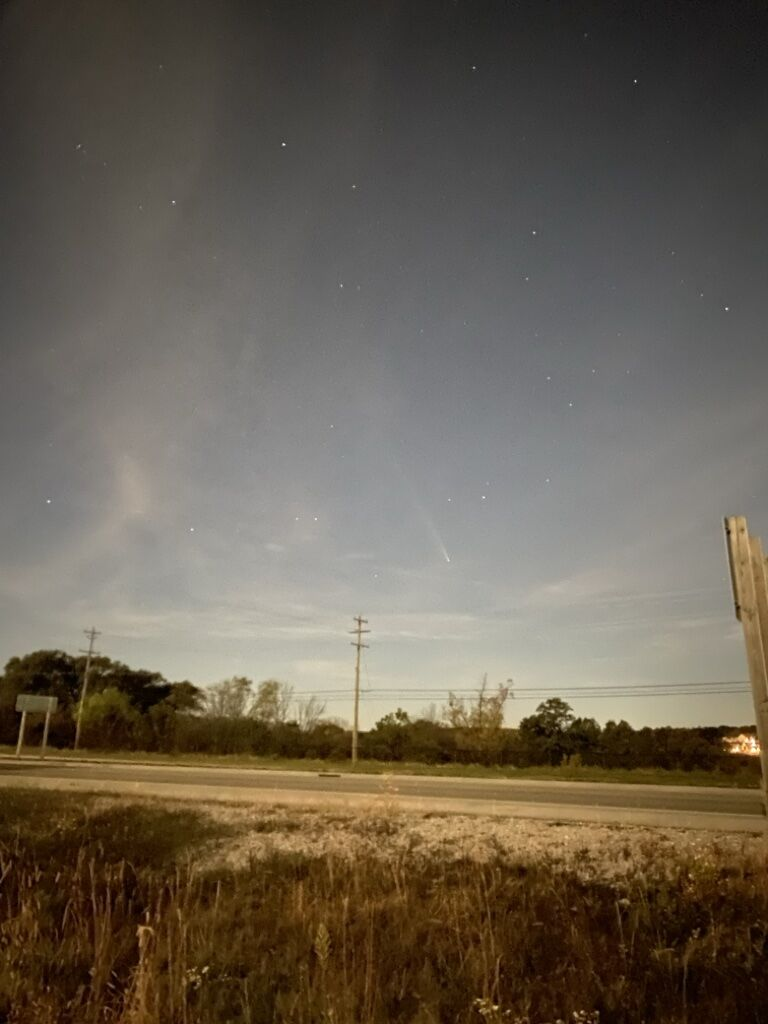
Comet C/2023 A3, also known as Tsuchinshan-ATLAS, has been in the evening sky for a week now. If you haven’t seen it, that’s understandable because there’s also been a bright Moon in the sky. But the Moon is Full tonight (Oct. 17) and will rise later tomorrow (Oct. 18) and each night thereafter. So, try to catch this beautiful celestial visitor before it moves so far from Earth that only telescopes will capture it.
To give you some idea as to how easy it is to spot, last night in Tucson, Arizona, I saw it in the western sky even though the sky was half full of clouds and light from the nearly Full Moon in the east was making them bright. I spotted it first through binoculars, but after 20 minutes the part of the sky the comet was in cleared, and I could see it without any optical aid.
No, it wasn’t as bright as the Moon or Venus, which was the brilliant starlike object to its left, but I could easily see the comet’s tail curving up and left. Through binoculars, the head appeared fuzzy and the tail fanned out, making an angle of some 30°.
If your sky is clear, you’ll see it after the evening twilight glow has mostly faded. Last night in Tucson, it was visible just 30 minutes after sunset. But at mid-latitudes or higher, where the Sun sinks at a slower rate, it could be an hour or longer. Find west. Start with binoculars (a 7×50 model works great) aimed a little to the left of west. Then slowly raise them until the area of the sky you’re looking at is as high above the horizon as twice the width of your fist held at arm’s length. That roughly equals 20°. You’re close. Now slowly move the binoculars around. You’ll see stars, which you can focus on. Soon, one object will appear like it’s out of focus. Oh, and it also has a tail. Congratulations, that’s Tsuchinshan-ATLAS.










